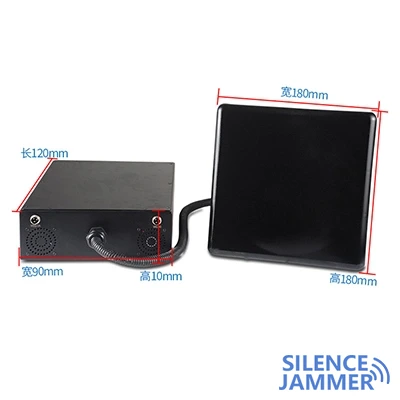Mobile phone signal jammer are indispensable in numerous environments, yet many individuals lack clarity on their installation process. While some assume a straightforward connection to the power supply suffices, others contend that frequency adjustment is imperative. Uncertainty persists regarding the operational efficacy of these signal shielding devices. Thus, let us delve into the underlying principles of signal jamming.

Adjacent Channel Interference:
Adjacent frequency interference denotes signal disruption at frequencies proximate to the utilized signal frequency. Imperfect receive filters are typically responsible for this phenomenon, allowing signals from adjacent frequencies to infiltrate the transmission bandwidth. Precision filtering and channel allocation serve to mitigate adjacent frequency interference.
Near and Far Effect:
The near-far effect arises when the base station of an adjacent channel transmits in close proximity to the user receiver. If the receiver utilizes the base station signal from the preset channel, it exacerbates the near-far effect.
Intermodulation Interference:
Intermodulation interference occurs when two or more signals of differing frequencies interact within a nonlinear circuit. This interaction results in the modulation of new frequencies, potentially causing interference within the receiver's operating channel bandwidth, thereby impeding receiver functionality.
Blockage and Interference:
Receiver systems possess a defined dynamic range of reception. When out-of-band interference surpasses a certain threshold, exceeding the receiver's maximum power level, complete receiver blockage occurs, disrupting system functionality. Prolonged blockage may lead to degraded receiver performance over time.
Spurious Interference:
Emission filters inherently produce out-of-band radiation known as emission spurs, contributing to spurious interference emission.
Interference Between Mobile Communication Systems:
In-Band Interference:
In-band interference occurs when CDMA signals directly transmit or function as in-band noise to GSM receivers through cross-adjustment methods. This interference, categorized into emission spurious interference and cross interference, diminishes GSM receiver sensitivity.
Out-of-Band Interference:
Out-of-band interference disrupts GSM system reception by fully blocking the receiver when interference reaches a critical level. This phenomenon, known as blocking interference, compromises system functionality.
In conclusion, a comprehensive understanding of the diverse forms of interference facilitates the effective deployment and operation of cell phone signal jammers, ensuring optimal performance and efficacy in signal shielding.












